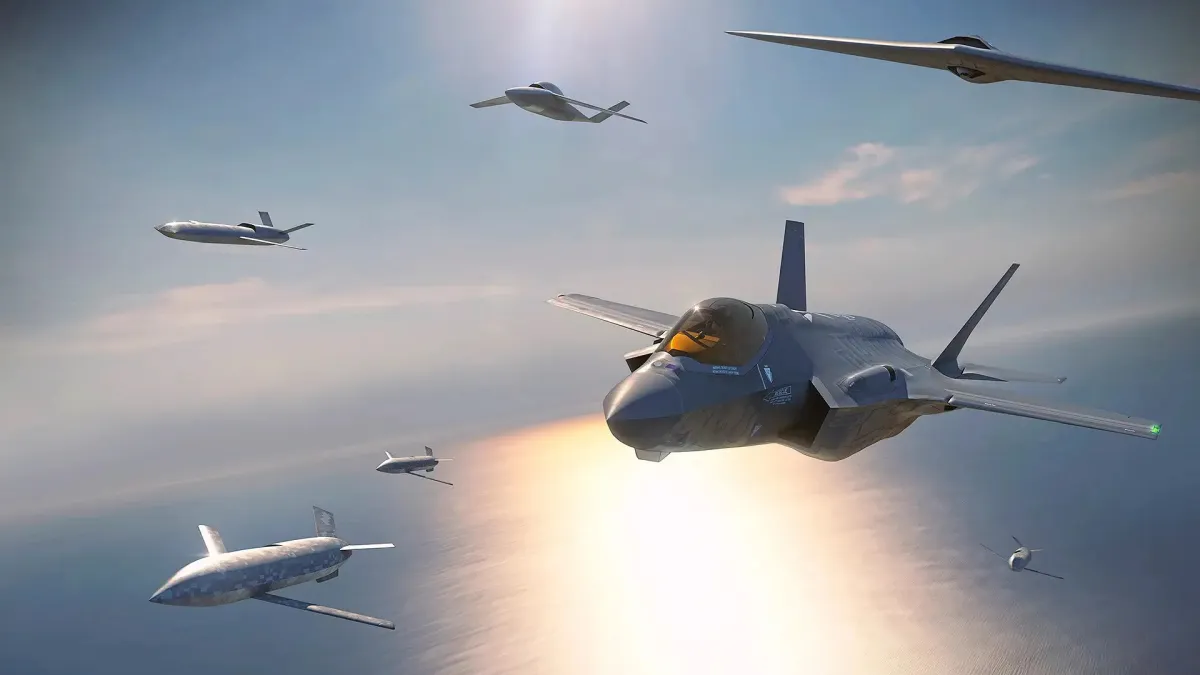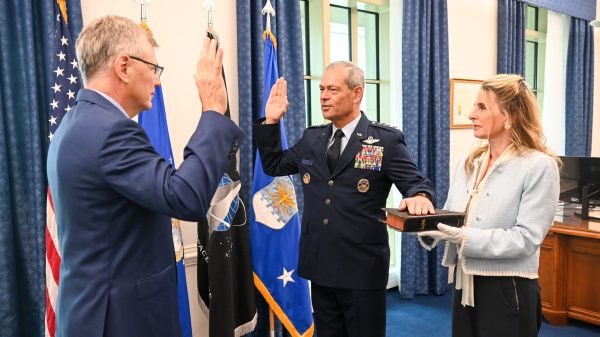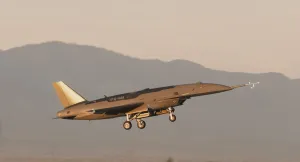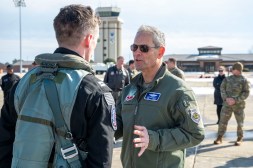Air Force still expects to award NGAD contract in 2024 despite uncertainties — ACC commander

Even with recent rumors that the Air Force is considering a delay or cancellation of its Next Generation Air Dominance (NGAD) platform, the service still plans to award a contract for the stealth fighter jet in 2024, according to the head of Air Combat Command.
Last year, the Air Force announced its intent to pick a contractor for NGAD’s engineering and manufacturing development phase sometime in 2024. However, comments made by senior service leaders in recent weeks have suggested that funding constraints and advancements in emerging technologies have prompted the Air Force to reevaluate the program — putting the fate of the NGAD platform in limbo.
But when asked whether or not the Air Force still planned to award a downselect for the NGAD fighter in 2024, ACC Commander Gen. Kenneth Wilsback told the Mitchell Institute on Wednesday that he does “expect it to be this year.”
Both Lockheed Martin and Boeing are considered to be the top contenders bidding for the contract. Although NGAD is a highly classified program, the sixth-generation aircraft is expected to be a long-range fighter jet equipped with advanced sensors, weapons payloads and enhanced stealth technology.
At press time, the Air Force has not responded to DefenseScoop’s requests to confirm the date of the NGAD award.
Although the NGAD platform has widely been considered a replacement for the fifth-generation F-22 Raptor fighter jet, Wilsbach seemed to suggest otherwise.
“There is no official replacement to the F-22 right now,” he said. “Obviously, it will be in complement with the [F-35 Lightning II], which we’re continuing to build. And hopefully soon we’ll start to take delivery of more of those as we get through the [Technology Refresh 3] slowdown at Lockheed Martin.”
Technology Refresh 3 (TR-3) is a suite of hardware and software meant to allow the F-35 to receive new upgrades as part of Block 4. However, prime contractor Lockheed Martin has struggled to validate the TR-3 software, forcing the Pentagon to pause deliveries of new F-35s to the services.
Wilsbach also emphasized that NGAD is more than a single aircraft, but part of a larger family of systems that also includes loyal wingman drones known as collaborative combat aircraft (CCA) and advanced command-and-control capabilities.
“I want everybody to be clear that it’s a family of systems, and there’s a lot of things that are not in the public sphere that we’ve been working on for a while and we’ll continue to expand that,” he said. “Part of it is the CCA, that is in the public sphere. But I’ll just say it’s a family of systems, not one thing.”
Air Force Chief of Staff Gen. David Allvin previously told the Mitchell Institute in June that the service’s CCA effort has played a role in its considerations for NGAD, emphasizing the importance of not putting “a lot of eggs in one basket” and instead pursuing new technologies that are adaptable to changing operational environments to mitigate risks.
“Built to last’ is a tremendous 20th century bumper sticker. But the assumption was, whatever you had was irrelevant as long as it lasted. I’m not sure that’s relevant anymore,” Allvin said. “Ten years after this, I’m hoping the technology will make it so that CCA won’t be as relevant, but it might be adaptable. And that’s where we’re building in modularity and adaptability.”
The service awarded contracts to Anduril and General Atomics in April to create detailed designs, manufacture and conduct flight tests for the first batch of CCAs, known as increment one. A competitive production decision for increment one is slated for fiscal 2026, and the Air Force plans to field the systems before 2030.
Wilsbach noted that when fielded, CCAs are expected to provide value as a force multiplier for the Air Force’s current fighter fleet, as the drones are expected to fly alongside manned F-35s and F-22s.
“The service has talked about potentially having as many as 1,000 of these CCAs to use in a contingency, and I think that’s a noble goal and one that would create a lot of dilemmas as people think about getting into a fight with us and having to content with that many plus all of our manned platforms,” he said.






